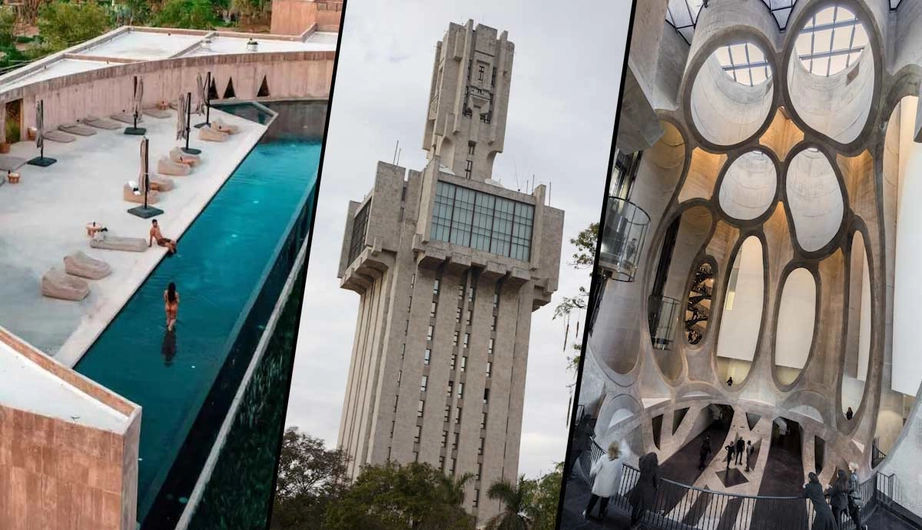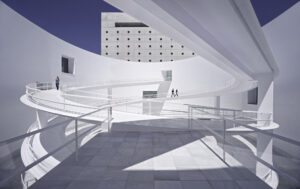Introduction: Concrete Brutalism’s Real Grit
The word is frequently criticized for being cold or alienating because it evokes ideas of huge, drab, monolithic blocks. However, this architectural trend was really a utopian endeavor, as indicated by the French phrase béton brut (raw concrete). It was an honest architecture designed to be structurally sound, socially democratic, and reasonably priced.
For far too long, a small group of white, male, European, and North American individuals have dominated the story of brutalism. A deeper, much more human history of the movement is hidden by this omission. In the Global South and Eastern Europe, brutalism really took off, serving as the architectural foundation for radical social housing, communist ideals, and new national identities.
Female designers and architects from developing countries used the raw material with a special sensitivity in these settings. In addition to creating monuments, they also created community markets, cultural institutions, and creative public housing. It’s time to honor the twelve brutalist masterpieces created by trailblazing women and the underappreciated inventors of the Global South.
Reclaiming Raw Concrete with Humanist Brutalists
These architects incorporated local craftsmanship and social vibrancy into the harsh design, using concrete not for dominance but for dialogue.
Lina Bo Bardi’s SESC Pompéia (São Paulo, Brazil)
The Brutalist structure designed by the Italian-Brazilian firebrand Lina Bo Bardi is anything but chilly. She decided not to tear down the old building and instead turned an abandoned factory into a thriving sports and cultural complex. Two tall, raw-concrete structures joined by hanging, vivid red walkways were her intervention. She jokingly referred to the towers’ uneven, round “porthole” entrances as “Spanish Civil War holes.” This architectural gesture of resistance that embraced communal life is Brutalism with spirit.
 Sesc Pompeia Factory Ramps | © Juan Pablo Fernandez
Sesc Pompeia Factory Ramps | © Juan Pablo Fernandez
Charles Correa’s Gandhi Smarak Sangrahalaya (Ahmedabad, India)
Charles Correa of India incorporated brutalist ideas into traditional vernacular building. Simple, modular 6×6 meter reinforced concrete sections make up the complex, which was created as a museum in Mahatma Gandhi’s honor. It mimics the design of traditional Banni village homes, which are arranged around a central courtyard, and captures the simplicity of Gandhi’s existence. The project exemplifies “tropical Brutalism,” in which simple concrete structures provide protection from the severe weather while still being welcoming and open.

Gandhi Smarak Sangrahalaya
Renée Gailhoustet, from Ivry-sur-Seine, France, wrote Le Liégat and Tour Raspail
In the suburbs of Paris, Brutalism was transformed into a tool for extreme social equality by devoted Communist architect Renée Gailhoustet. Her buildings, such as Le Liégat and Tour Raspail, are characterized by multi-level apartments, staggered floor layouts, and spacious private patios brimming with flora, rejecting the typical, monotonous “cells” of mass housing. A higher standard of living is framed by the exposed béton brut, which demonstrates her conviction in the “pleasure of inhabiting.”

The late architect at her home in Le Liégat, Ivry-sur-Seine, France. Photo © Valérie Sadoun
Ítala Fulvia Villa’s “The Sexto Panteón” (Buenos Aires, Argentina)
The Sexto Panteón, a massive underground necropolis at the Chacarita Cemetery, is arguably the most eerie Brutalist piece on this list. One of Argentina’s first female architects, Ítala Fulvia Villa, co-designed this imposing building that reimagined the urban reality of death. Its extensive, logical underground network of unfinished concrete rooms is broken up by striking lighting, transforming a practical area into a profound, nearly mystical encounter. This project exemplifies the ability of brutalism to use unvarnished, raw form to address significant urban issues.
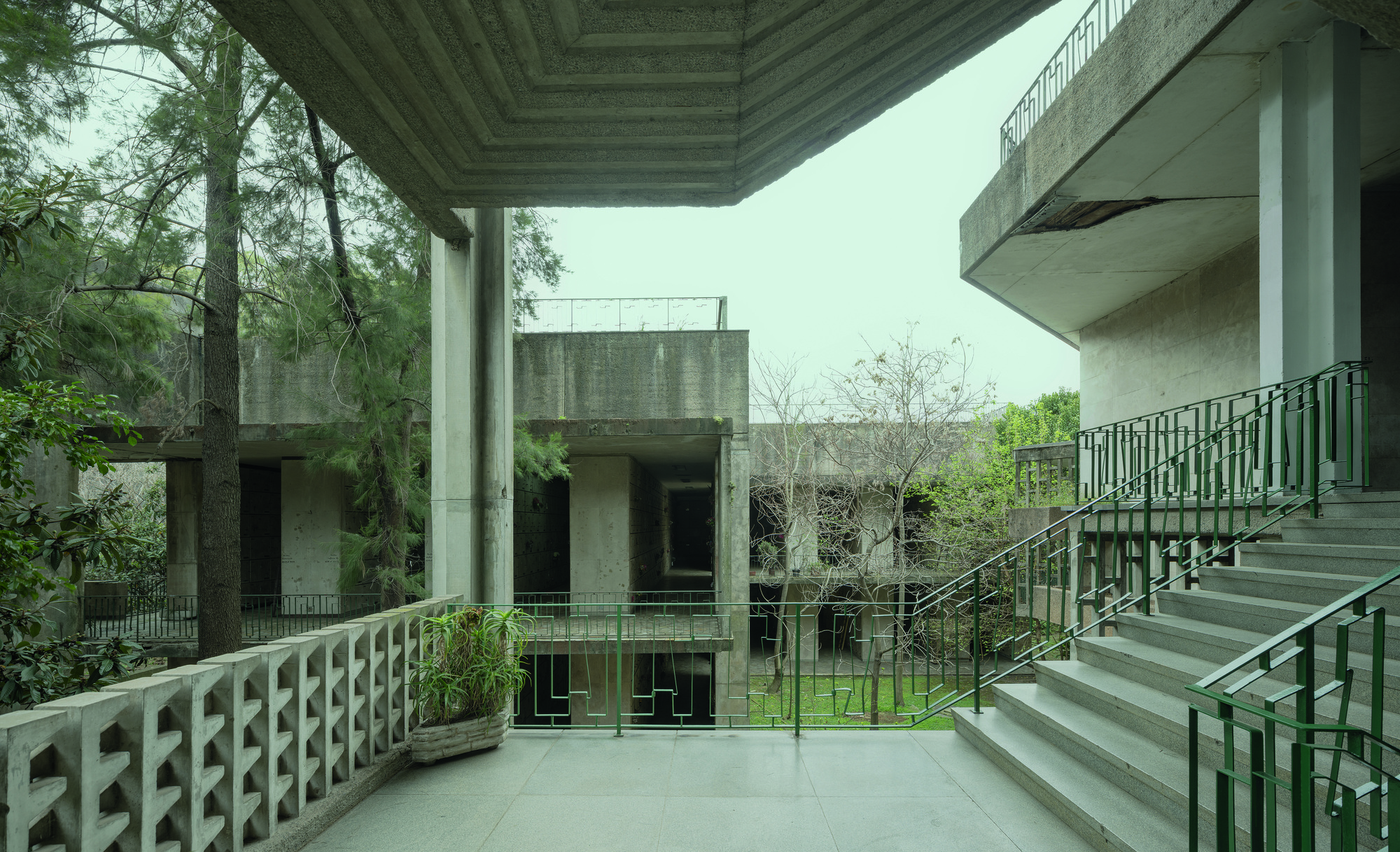
tala Fulvia Villa’s “The Sexto Panteón”
Eastern and Southern Concrete Utopias
Exposed concrete began to represent modernism, scientific advancement, and a daring, newly independent future in the former Yugoslavia and throughout Africa.
Svetlana Kana Radević’s Hotel Podgorica (Podgorica, Montenegro)
For the exquisite Hotel Podgorica, Svetlana Kana Radević became the first woman in Yugoslavia to win the Federal Architecture Prize. The two-story, low-slung building was constructed in 1967 and uses bare concrete as a fluid extension of its surroundings rather than as a brutal tool. Its rough concrete texture mimics the river stones below, following the Morača River’s natural curve. It is a well-balanced, site-specific piece that infuses a local landscape with Brutalist power.

Hotel Podgorica by Svetlana Kana Radevic, Montenegro
Ivanka Raspopović Museum of Contemporary Art (Belgrade, Serbia)
Ivanka Raspopović co-designed this geometric wonder of a museum in Belgrade, which is frequently referred to as the “crystal at the confluence.” It is made up of six cubic modules that rotate and are supported by a rectangle base. Visitors are led through five semi-levels of natural light that are filtered through skylights in the distinctive, flowing design, which is devoid of internal walls. The building’s exquisite combination of white marble, glass, and concrete demonstrates Yugoslav modernism’s intellectual aspirations.
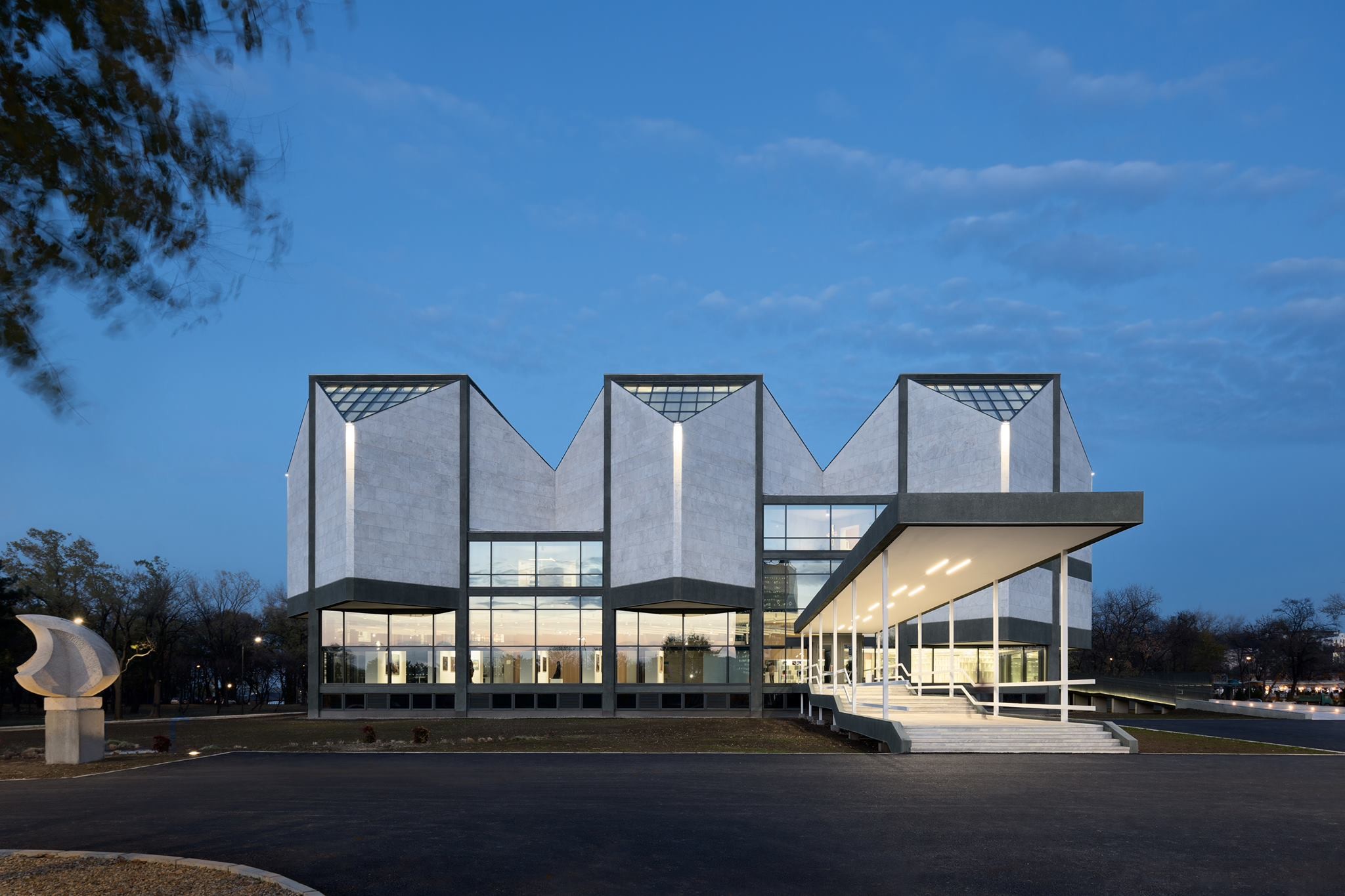
Museum of Contemporary Art
Clorindo Testa (Buenos Aires, Argentina) Bank of London and South America
The bank headquarters of Clorindo Testa, which was designed in collaboration with the SEPRA firm, is a globally recognizable symbol of brutalism. In essence, the building is a huge, protective concrete shell that makes room for a sizable inner banking hall without any columns. A massive, sculpture-like frame is created at the top by the perimeter structure’s dramatic fanning out. This structure transformed the inflexibility of the corporate world into a striking concrete urban plaza that embodied the dramatic architectural flare of the era.

Bank of London and South America Clorindo Testa
Mimoza Nestorova-Tomić’s Museum of Macedonia (Skopje, North Macedonia)
Mimoza Nestorova-Tomić was at the heart of the city’s restoration strategy after the deadly 1963 Skopje earthquake. Her 1972 Museum of Macedonia, which she co-designed with Kiril Muratovski, is a significant part of the socialist modernity of the area. A strong and lasting promise of a future for the whole, rebuilt and based on a new national vision, was embodied by these concrete structures, which went beyond simple utilitarian construction.

Museum of Macedonia, Skopje, Macedonia | Mimoza Nestorova-Tomić | 1978
Context and Craft Pioneers
These architects demonstrated that béton brut might be deeply contextualized by incorporating regional materials and sociocultural allusions.
Věra Machoninová’s Hotel Thermal in Karlovy Vary, Czech Republic
This enormous building, which was designed by Věra and Vladimír Machonin, served as the artistic and social focal point of the Karlovy Vary International Film Festival. Despite considerable debate surrounding its colossal, uncompromising form—which combined Neo-Brutalist and International Style functionalism—it is nonetheless a potent illustration of the post-war state’s aspirations for public infrastructure. In opposition to conservative trends, Věra’s work promoted a fresh approach to modern design.
Příběh Thermalu: Věra Machoninová byla Věrou Chytilovou architektury
Blèce Afoda-Sebou’s Marché Hédzranawoé (Lomé, Togo)
Designed by Blèce Afoda-Sebou in the 1980s, this market hall in Lomé, Togo, is a really “unseen” masterpiece that blends structural brutalism with African sensibility. Designed to suggest a “symbolic key of African femininity,” the complex’s unique trefoil floor layout pays homage to the women who manage the market. It illustrates how concrete was modified by architects throughout the continent to provide locally appropriate, culturally meaningful public areas.
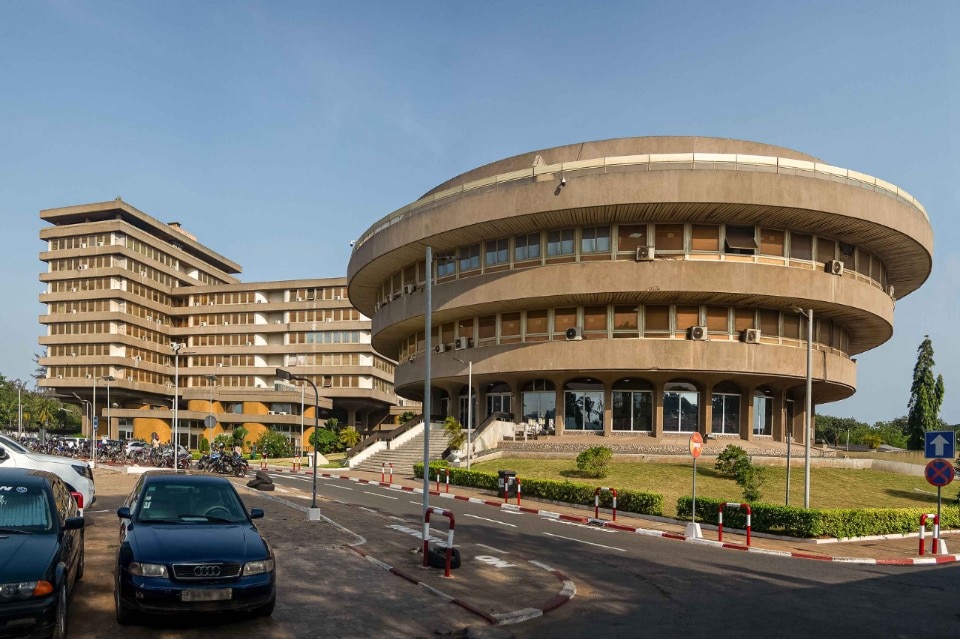
The incredible building of Togo
Minnette de Silva’s Tropical Modernism/Karunaratne House (Kandy, Sri Lanka)
By incorporating native crafts and exposed materials, Minnette de Silva was a trailblazer of Sri Lankan modernism, opposing the colonial past. Although her work is referred described as “Regional Modernism,” the Brutalist ethos of truth to materials is in line with her honest and unvarnished use of native stone, timber, and visible structure. Her designs, such as the Karunaratne House, demonstrate how unadorned, natural architecture may be ideal for tropical climates, providing thermal comfort without the need for mechanical systems.

De Silva’s first house in Colombo
Ljiljana Bakić’s Public Housing Projects in Belgrade, Serbia
Working mostly with her husband Dragoljub, Ljiljana Bakić was a powerful figure in Yugoslavia’s state-owned design company, Energoprojekt. She constantly focused on public institutions and humane, high-quality social housing. Her painstaking effort on projects like the Pioneer City Children’s Holiday Resort, although being sometimes overlooked, showed a commitment to the social mission of design. Her life and work serve as a potent reminder of the innumerable women who worked behind the scenes to create the Modernist and Brutalist landscapes, utilizing concrete to create a more positive social reality.

Ljiljana Bakić Foto: Privatna arhiva
Conclusion: Brutalism’s True Legacy
The structures on this list go against the popular belief that brutalism is an exclusively Western, scholarly, or austere architectural style. A spiritual necropolis in Argentina, a thriving cultural center in Brazil, and a contextualized hotel in Montenegro are just a few examples of the varied work produced by these female and Global South architects.
Their use of raw concrete frequently served as a political statement, demonstrating their dedication to creating a modern, equitable future for their countries as well as their embrace of honesty and rejection of colonial decoration. We honor the genuine, deep, and revolutionary complexity of an architectural movement that was always meant to be about the people by turning the spotlight on these marvels.
For more blogs like this CLICK HERE!!
Reference:
Projects by Female Architects from the Global South for Women’s Day 2024 | ArchDaily
11 Women Architects From the Global South That Are Changing the World | AD Middle East

